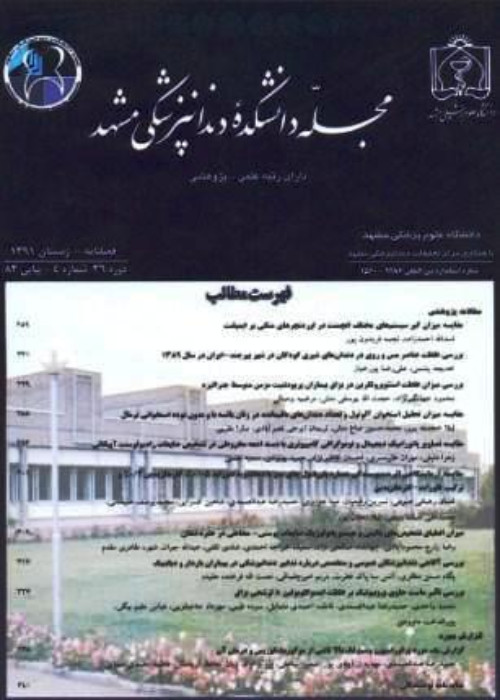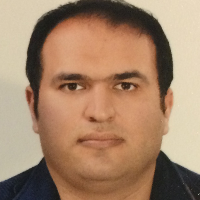Assessment of Obstructive Sleep Apnea in Patients with Skeletal Class III malocclusion Following Mandibular Setback Surgery with Combination of STOP-BANG, Berlin, and Epworth Sleep Scale Questionnaires
Author(s):
Article Type:
Research/Original Article (دارای رتبه معتبر)
Abstract:
Introduction
The present study aimed to evaluate the incidence of obstructive sleep apnea (OSA) after monomax mandibular setback surgery using a combination of Berlin, STOP-BANG, and Epworth SleepScale questionnaires. Materials and Methods
This double-blind quasi-experimental before-after study was carried out on a total of healthy patients with class III deformity and eligible for orthognathic mandibular setback surgery. Age, gender, body mass index, neck circumference, and amount of mandibular setback were recorded in the study checklist. The incidence of OSA was assessed for allthe patients 1 week before the operation and 1 and 6 months following the surgery using the aforementioned questionnaires under the supervision of a pulmonary specialist. Descriptive and analytical statistics were analyzed by SPSS software (version 17). A p-value of less than 0.05 was considered statistically significant. Results
A total of 30 patients, including 15 males and 15 females, with a mean age of 25.77±4.76 years participated in this study. The mean scores of OSA questionnaires increased a month after mandibular setback surgeryusing bilateral sagittal split osteotomy, compared to those reported before the operation; however, 6 months following the surgery, the results numerically reduced closer to the patient’s normal condition. The amount of mandibular setback was directly correlated with the incidence of OSA in patients 1 and 6 months after the surgery based on all the three questionnaires; nevertheless, it was significantly and directly correlated with STOP-BANG questionnaire (p < /em><0.05). Conclusion
The obtained results of the present study indicated that there was no evidence of severe OSA 6 months following mandibular setback surgery. Additionally, obese patients and those submitted to a large amount of mandibular setback presented a higher chance of developing OSA. The findings of the present study showed that the results of the numerical changes of the sleep questionnaires and incidence of OSA 1 and 6 months after the surgery and before the operation were significantly lower in patients with mandibular setback up to 5 mm, compared to those with equal or greater than 5 mm.Language:
Persian
Published:
Journal of Mashhad Dental School, Volume:44 Issue: 3, 2020
Pages:
236 to 247
magiran.com/p2166590
دانلود و مطالعه متن این مقاله با یکی از روشهای زیر امکان پذیر است:
اشتراک شخصی
با عضویت و پرداخت آنلاین حق اشتراک یکساله به مبلغ 1,390,000ريال میتوانید 70 عنوان مطلب دانلود کنید!
اشتراک سازمانی
به کتابخانه دانشگاه یا محل کار خود پیشنهاد کنید تا اشتراک سازمانی این پایگاه را برای دسترسی نامحدود همه کاربران به متن مطالب تهیه نمایند!
توجه!
- حق عضویت دریافتی صرف حمایت از نشریات عضو و نگهداری، تکمیل و توسعه مگیران میشود.
- پرداخت حق اشتراک و دانلود مقالات اجازه بازنشر آن در سایر رسانههای چاپی و دیجیتال را به کاربر نمیدهد.
In order to view content subscription is required
Personal subscription
Subscribe magiran.com for 70 € euros via PayPal and download 70 articles during a year.
Organization subscription
Please contact us to subscribe your university or library for unlimited access!



